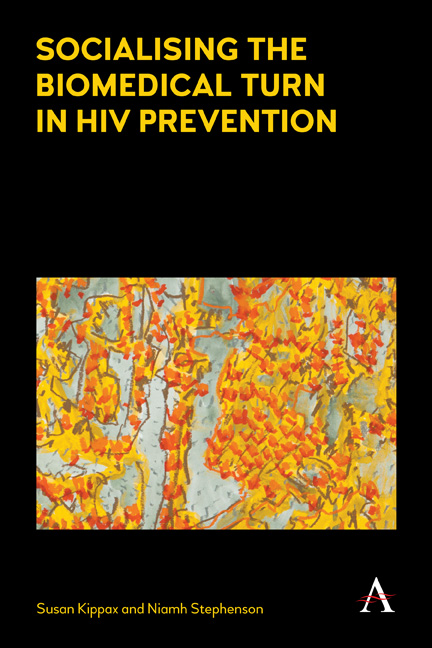Book contents
- Frontmatter
- Dedication
- Contents
- List of Figures
- List of Tables
- Acknowledgements
- Introduction
- Part I EFFECTIVE HIV PREVENTION
- Part II SOCIAL TRANSFORMATION
- 4 The Biomedical Narrative of HIV/AIDS
- 5 Risk and Vulnerability
- 6 Social Practices of Communities
- 7 Researching Social Change, Working with Contingency
- Notes
- References
- Index
7 - Researching Social Change, Working with Contingency
from Part II - SOCIAL TRANSFORMATION
Published online by Cambridge University Press: 17 June 2017
- Frontmatter
- Dedication
- Contents
- List of Figures
- List of Tables
- Acknowledgements
- Introduction
- Part I EFFECTIVE HIV PREVENTION
- Part II SOCIAL TRANSFORMATION
- 4 The Biomedical Narrative of HIV/AIDS
- 5 Risk and Vulnerability
- 6 Social Practices of Communities
- 7 Researching Social Change, Working with Contingency
- Notes
- References
- Index
Summary
The transmission of HIV is the direct outcome of particular sets or patterns of social and cultural practice – or, as was claimed early in the epidemic with reference to gay men, it is a function of ‘lifestyle’. Patterns of social and cultural practice also give rise to diseases such as lung cancer (as caused by smoking) and diseases associated with obesity, such as heart disease and diabetes. Increases and decreases in incidence rates of these diseases are, to a greater or lesser extent, a function of social practices. While it is true that individuals may find it difficult to act and modify their practice so as to avoid or reduce their risk, collectively people can and have acted to do just that. People around the world have stopped smoking, many have reduced their weight, many have changed their sexual and drug injection practices, and many have lobbied governments and industry to implement regulation and changes to support them.
The reduction of HIV transmission is to a very large extent in the hands of collectives, the communities affected by HIV: it is these communities that have produced social practices that have reduced HIV transmission. This is particularly evident in those countries where governments have supported and funded communities to act and to develop ‘AIDS competence’. Roy Anderson (2000) claimed at the International AIDS Conference in Durban that we know what works. And we continue to know what works. Effective prevention involves the sustained uptake of a range of social practices that reduce the likelihood of the transmission of HIV. We have discussed a number of these: the reduction in the number of one's sexual partners; the use of condoms (for sex) and sterile needles and syringes (for injecting); the uptake of pre-exposure prophylaxis (PrEP) among HIV-negative people and the uptake of antiretroviral treatments (ART) among those who are living with HIV; and male circumcision. As we have argued, whether these strategies are considered behavioural or biomedical, they all involve changes in practice, changes that are regulated by the norms and conventions of the social world in which those affected by HIV live and in which they have sex and inject drugs.
- Type
- Chapter
- Information
- Socialising the Biomedical Turn in HIV Prevention , pp. 129 - 146Publisher: Anthem PressPrint publication year: 2016



